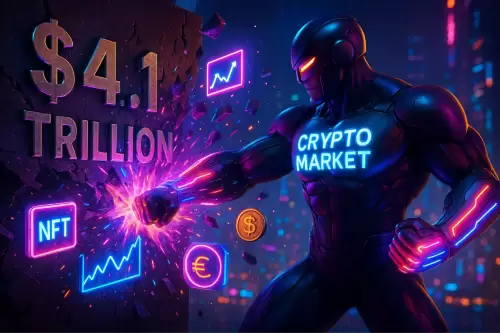 |
|
 |
|
 |
|
 |
|
 |
|
 |
|
 |
|
 |
|
 |
|
 |
|
 |
|
 |
|
 |
|
 |
|
 |
|
Cryptocurrency News Articles
The Evolving Global Regulatory Landscape for Stablecoins
Jun 11, 2025 at 12:00 pm
This article explores the current and future regulatory environment for stablecoins, focusing on the US and Hong Kong. It analyzes the GENIUS Act and STABLE Act

The global regulatory landscape for stablecoins is rapidly evolving, with significant legislative efforts underway in key jurisdictions, particularly as the US allocates more attention and urgency to this emerging sector.
US Stablecoin Legislative Efforts: GENIUS Act and STABLE Act
In the United States, stablecoin legislative efforts are well underway, with two main acts advancing in different branches of Congress: the GENIUS Act in the Senate and the STABLE Act in the House.
The GENIUS Act, which advanced in the Senate in May, defines a payment stablecoin as a digital asset primarily intended for payment or settlement. It imposes restrictions on the issuer’s business, limiting it solely to the issuance, redemption, management, and safekeeping of stablecoins.
Crucially, the act mandates a one-to-one backing of all outstanding payment stablecoins with high-quality, liquid assets, explicitly specifying US Treasury Bills with a maturity of less than 93 days. The legislation also aims to limit the ability of stablecoins to offer yields, a measure potentially designed to prevent direct competition with traditional money market funds. Its focus is on establishing federal standards for federally permissioned issuers.
The House’s version of stablecoin legislation, the STABLE Act, clarifies that a payment stablecoin must be denominated in a national currency and explicitly excludes it from being defined as a “deposit” or “account” under existing banking laws.
Similar to the GENIUS Act, the STABLE Act requires a one-to-one backing of stablecoins. These federal standards would apply to all permitted payment stablecoin issuers, with federal authorities mandated to consult with state authorities in developing these standards.
SEC Approves Yield-Bearing Stablecoins as ‘Certificates’
In February, the US Securities and Exchange Commission (SEC) provided regulatory clarity for yield-bearing stablecoins by approving them as “certificates” subject to securities regulation.
This approval allows these assets to operate under specific rules, including registration, disclosure requirements, and investor protections, signaling a defined pathway for regulated yield-bearing products within the US.
US Anti-CBDC Stance and Preference for Private Stablecoins
US policy, particularly under the administration of President Trump, has adopted a strong stance against Central Bank Digital Currencies (CBDCs). These are viewed as inherently un-American due to concerns regarding privacy risks and potential government surveillance.
Instead, the US prioritizes privately-issued, dollar-backed stablecoins as the preferred mechanism for safeguarding and extending the global role of the US dollar.
Hong Kong Passes Stablecoins Bill, Setting Regional Benchmark
Hong Kong's Legislative Council passed a comprehensive Stablecoins Bill on May 21, positioning the city as a regulatory leader in the rapidly evolving global digital asset landscape.
The bill's provisions are stringent, with a focus on robust economic and technical standards. It imposes substantial obligations on stablecoin issuers, aiming to protect users and maintain financial stability. Key highlights include:
* Stringent licensing requirements for stablecoin issuers, encompassing capital adequacy and risk management capabilities.
* Mandates for stablecoins to be backed by a basket of high-quality liquid assets, such as US Treasury Bills, and for the value of these assets to exceed the outstanding stablecoin amount.
* Guarantees for the par value redemption of stablecoins at any time and direct rights for coin holders to claim reserve assets in the event of issuer insolvency.
Europe's MiCA Policies and Stablecoin Concerns
In contrast, Europe's MiCA policies often favor Central Bank Digital Currencies (CBDCs) and typically view private stablecoins as potential financial stability risks.
For instance, Italy's finance minister expressed concerns about new US policies on dollar-backed stablecoins, signaling potential threats to European financial stability.
Global Stablecoin Transaction Volume and Integration
It's noteworthy that over 80% of global stablecoin transactions occur outside the United States, highlighting a fragmented regulatory landscape that creates confusion, friction, and higher costs for consumers.
The United States, in particular, sees a “golden opportunity” to establish international digital asset standards, potentially leveraging its G20 presidency to coordinate commonalities in global crypto regulation.
Simultaneous legislation in the US (GENIUS Act, STABLE Act) and Hong Kong's new law clearly demonstrate a broader competitive aspect, with nations linking their digital asset strategy to broader economic and geopolitical goals.
For example, the US aims to maintain dollar hegemony and hegemony in setting technical and economic standards for the global financial system, while Hong Kong hopes to set a regional benchmark in East Asia. Meanwhile, Europe's preference for a CBDC model in MiCA signals further divergence in the competitive landscape.
This divergence will likely fragment the global stablecoin market, with different jurisdictions favoring distinct models, such as the US's focus on private dollar-backed stablecoins.
Such fragmentation could impede seamless cross-border payments and interoperability, posing significant operational and compliance challenges for businesses operating
Disclaimer:info@kdj.com
The information provided is not trading advice. kdj.com does not assume any responsibility for any investments made based on the information provided in this article. Cryptocurrencies are highly volatile and it is highly recommended that you invest with caution after thorough research!
If you believe that the content used on this website infringes your copyright, please contact us immediately (info@kdj.com) and we will delete it promptly.






























































